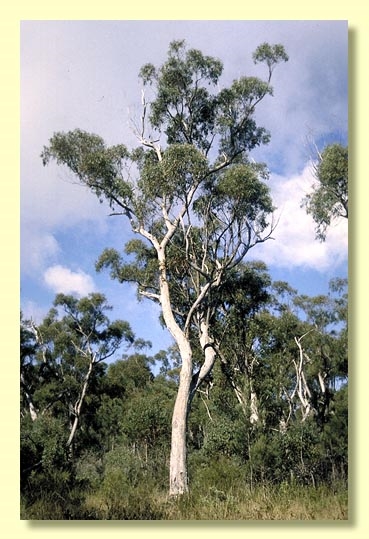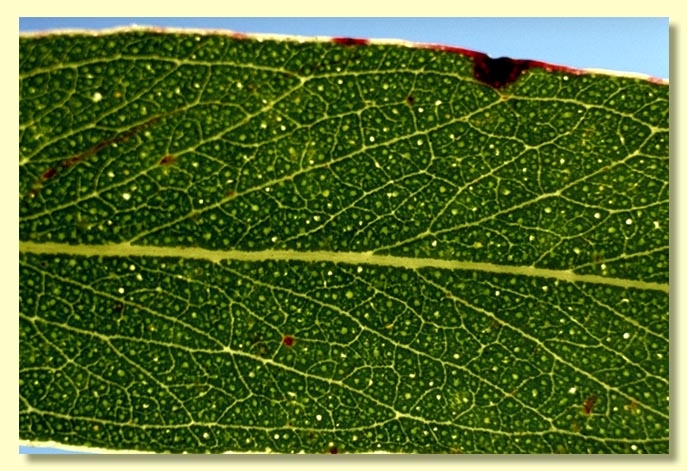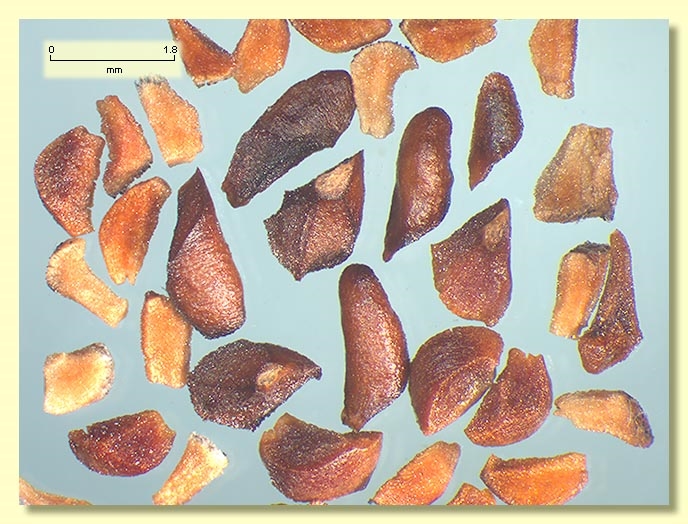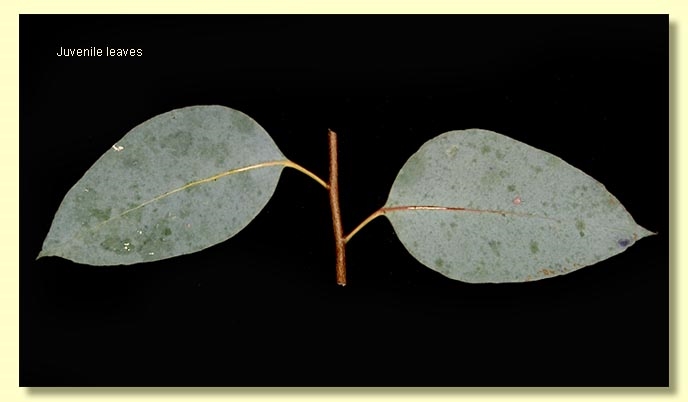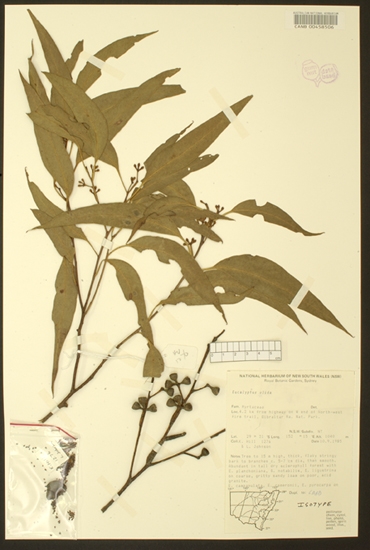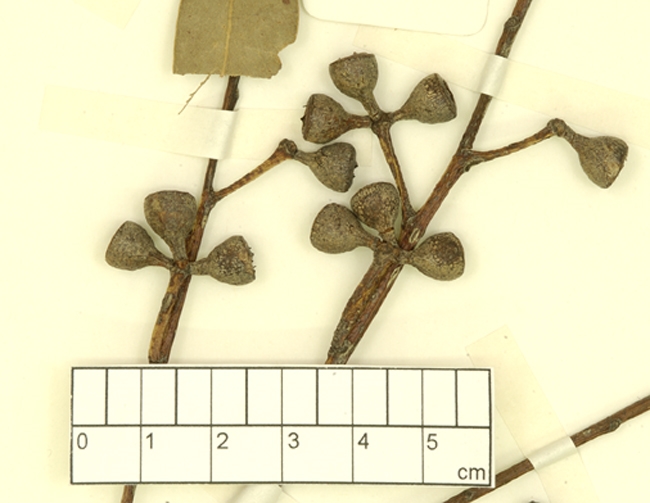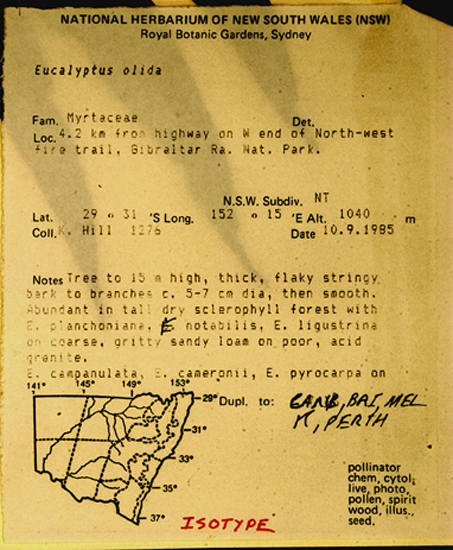Eucalyptus | Eucalyptus | Cineraceae | Psathyroxylon | Considenianae
Euclid - Online edition
Eucalyptus olida
Bark rough, thick, flaky and fibrous to branches 5–8 cm diameter, orange-brown or grey.
Juvenile growth (coppice or field seedlings to 50 cm): stem rounded in cross-section, warty to almost scabrid on lower stem; juvenile leaves subsessile to shortly petiolate and opposite for ca 5 nodes, then alternate, petiolate, ovate, 4.5–10 cm long, 2.5–5.5 cm wide, base rounded or tapering to petiole, dull, green to blue-green.
Adult leaves alternate, petiole 1–2 cm long; blade lanceolate to falcate, 7–18.5 cm long, 0.9–2.6 cm wide, base oblique or tapering to petiole, concolorous, slightly glossy to dull, green to grey-green, side-veins acute, sparsely to moderately reticulate, intramarginal vein parallel to and well removed from margin, oil glands mostly island.
Inflorescence axillary unbranched, peduncles 0.4–1.8 cm long, buds 7 to 15 or more per umbel, pedicels 0.3–0.4 cm long. Mature buds obovoid, ca 0.4 cm long, 0.2–0.3 cm wide, scar absent, operculum rounded-apiculate to conical, stamens inflexed or irregularly flexed, all fertile, anthers reniform to cordate, versatile, dorsifixed, dehiscing by confluent slits, style long, stigma tapered, locules (3)4, the placentae each with 2 vertical ovule rows. Flowers white.
Fruit on pedicels 0.2–0.4 cm long, cup-shaped, barrel-shaped or campanulate, 0.6–0.7 cm long, 0.5–0.9 cm wide, disc raised-annular to slightly descending, valves (3)4, near rim level or enclosed.
Seeds dark brown to grey to black, 1.5–2.5 mm long, pyramidal or obliquely pyramidal, dorsal surface smooth, hilum terminal.
Cultivated seedlings (measured at ca node 10): cotyledons reniform; stems rounded in cross-section, scabrid or warty on lower part; leaves sessile or shortly petiolate, opposite, discolorous and ovate-elliptic for lower ca 5 nodes, then becoming petiolate, alternate, ovate, 7–10 cm long, 3.5–5.5 cm wide, base rounded to tapering, concolorous, dull, grey-green to green.
Flowering has been recorded in February.
A small to medium-sized tree known only from two populations, viz. the Gibraltar Range and Timbarra Plateau in the eastern Northern Tablelands of New South Wales, on granite-derived soils.
Eucalyptus olida belongs to the blue-leaved ashes and has the peppermint-type bark of E. andrewsii and E. consideniana, with fruit more like E. andrewsii subsp. andrewsii, from which it differs in the methyl cinnamate oil of the leaves, that normally can be detected as a unpleasant odour when the fresh leaves are crushed. It is further distinguished from these other species by the long style which reaches to the underside of the operculum and by the absence of staminodes (i.e. all stamens are fertile).
Eucalyptus olida is not very well-known morphologically but belongs in Eucalyptus subgenus Eucalyptus section Cineraceae series Psathyroxylon having the following characters: cotyledons reniform, juvenile leaves alternate, bluish, adult leaves with side-veins acute, single axillary inflorescences with buds in clusters of ?7 to 15, buds with single operculum, usually inflexed stamens with reniform anthers, ovules in two rows and seeds more or less pyramidal. Bark and fruit features suggest it may belong to the same subgroup as E. andrewsii and E. consideniana, viz. subseries Considenianae, but species in this subgroup usually have a short style and sterile outer stamens, whereas E. olida has all stamens fertile and a long style..

